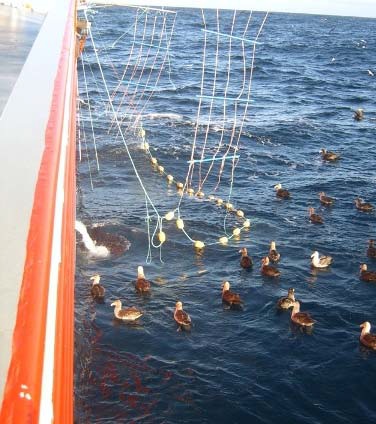Paragraph 9 of Мера по сохранению 25-02 'Minimisation of the incidental mortality of seabirds in the course of longline fishing or longline fishing research in the Convention Area' requires the use of a 'device to discourage birds from accessing baits during the haul of longlines' in Statistical Subareas 48.3, 58.6 and 58.7 and Statistical Divisions 58.5.1 and 58.5.2. In 2009, based on the analysis of seabird by-catch on vessels with bird exclusion devices (BEDSs) of different design, CCAMLR agreed guidelines on the operational characteristics of BEDs (Conservation Measure 25-02 (2009), Annex 25-02/B). Paragraph 1 of Annex 25-02/B describes the two main operational characteristics of effective BEDs as a deterrence of birds from flying directly into the area where the line is being hauled and the prevention of birds that are sitting on the surface from swimming into the hauling bay area. Accordingly vessels are encouraged to use BEDs that demonstrate these two characteristics.
Rather than specify a single BED configuration CCAMLR agreed to provide illustrative examples of BEDs that have been shown to achieve the operational characteristics in paragraph 1 of the annex. This recognises that there may be different configurations of BEDs that demonstrate the two characteristics and also to allow for continued modification and improvement to the design of BEDs where vessel specific and other factors may be important.
A BED configuration that demonstrates the two characteristics is shown in the following image:

A bird exlusion device (BED) consisting of two booms mounted fore and aft of the hauling bay with streamers suspended from each boom and a line of purse seine floats tethered between the two booms. In this configuration the suspended streamers deter birds from flying directly into the area where the line is being hauled and the line of yellow buoys prevent birds that are sitting on the surface from swimming into the hauling bay area.


